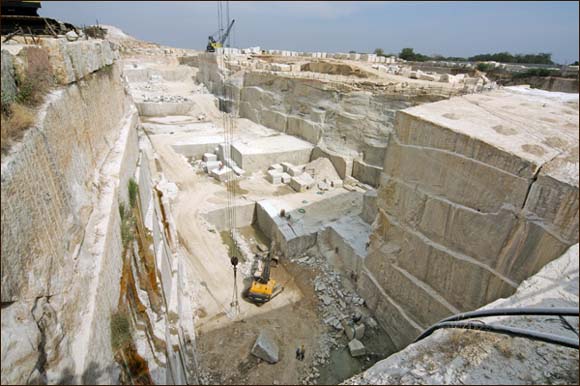Granite is one of the most popular countertop materials used in kitchens and bathrooms across the United States. Many home owners are curious about the origin and composition of granite. Other home owners may want the information in order to choose the right type of material for their application.
Here is a brief account of the composition of granite and its characteristics that may help satisfy your curiosity.
Granite is a naturally occurring rock that is formed deep beneath the Earth’s crust over millions of years when Magma or Lava cools and solidifies under heavy pressures. The granite is called an Igneous Rock derived from a Latin word “Ignis” meaning fire. Granite contains several minerals, of which quartz, feldspar, and mica are the three main components.
The geologic process that occurs to create granite happens slowly over time. The slow cooling process from intense heat makes granite a strong and dense material.
Granite Mineral Proportions
A large portion of granite consists of feldspar. Granite also contains a significant amount of quartz. Mica and amphibole make up small percentages of the granite mixture.
The proportions of minerals in granite vary. To fit a petrologist definition of true granite, the material must contain 10 to 50 percent felsic materials and 65 to 90 percent total feldspar minerals.
Granite like Stones
Some naturally found stones that are not exactly granites from a petrologist’s point of view, but are called granites from a commercial point of view.
Schist stone
They are not igneous rocks like granite, and are actually metamorphic rocks. Schist consists of more mica, and since mica is a more flaky material, Schist will be more difficult to polish and make into countertops. Cosmoz, Saturnia, and Orion Jazz are some of the examples of Schist stone that are sold in United States as a countertop material.
Gneiss Stone
A good part of the stones used as countertop materials in the United States are commonly called granite slabs, but are actually Gneiss rocks.
Gneiss is another metamorphic stone that has undergone a further degree of metamorphism at very high temperatures and pressure to become closer to granite rock in its physical characteristics. Strictly speaking they are not true granites in the sense that they are not igneous rocks. Since their hardness and durability are close to that of Granite, they can be used as countertop material.
Cooling
The slow cooling period is instrumental in the formation of granite. The crystals in granite develop as the liquid-hot rock cools under the Earth’s surface. Crystals become larger during the cooling process, which creates density and stunningly beautiful appearance within granite.
Coloring of Granite
The mix of minerals present in granite combine to give it distinctive coloring. Granite often has a gray, white, red or pink coloring. Granite can also be dark gray or black. Flecks of darker minerals appear throughout granite, giving it color variations.
Various mineral inclusions give different colors to granite. For example, granite gets it Red color from the inclusions of Hematite (Oxide of Iron) and it gets Green color with inclusions of Potassium into the Feldspar.
Geological Location of Granite
Granite tends to sit abundantly within the continental crust of the Earth. Sedimentary rock formations cover granite. Over time, the sedimentary rocks may move or they might erode away. When this happens, the granite becomes exposed.
Geologists call granite lying beneath sedimentary rock cover “basement rocks.” The granite serves as the foundation for the rock layer above.
Geographic Location of Granite
Granite exists in significant deposits in most parts of the world. Major portions of the granite for countertop usage in United States are quarried in Brazil, India, Italy, Namibia, China, Finland, and Norway.
Unite States has large deposits of granite in Georgia, Idaho, Massachusetts, New Hampshire and South Dakota. No significant quantities of granite are quarried in US for the purpose of granite countertops.
Extracting Granite
Extracting granite from the Earth involves various mining and quarrying processes.
The inexpensive blast extraction method involves drilling a hole into rock surface and blasting the area to extract blocks of granite. Air bag extraction uses air instead of an explosion to loosen granite boulders. Stone-cut extraction requires cutting out granite from the earth using precision machinery. Stone-cut extraction is the most expensive, but the most accurate extraction method.
It is obvious that the natural stone fabricator needs to be well versed with various rock types, so that the home owners may be advised about the right selection of stone for their projects. Reputed stone fabricators tend to become members of the Marble Institute of America to get a thorough education on different natural stone materials.
Many colors of elegant granite and marble slabs are stocked at Arch City Granite & Marble in O’Fallon, Missouri location. Our stone professionals will be able to advise you about the right choice of stone for your project.
